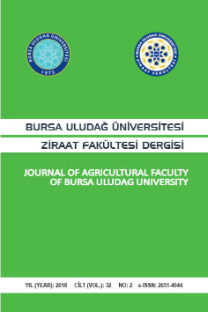Assessment of microbiological contamination factors in frozen stuffed snail processing stages
bakteriler, Listeria, Staphylococcus, aeroblar, koliform bakterileri, deniz ürünleri, Escherichia coli, Salmonella, gıda bulaşıklılığı, dondurulmuş gıdalar, kabuklu su ürünleri, mikrobiyal bulaşıklık
Dondurulmuş salyangoz dolması üretiminde mikrobiyolojik kontaminasyon faktörlerinin belirlenmesi
bacteria, Listeria, Staphylococcus, aerobes, coliform bacteria, seafoods, Escherichia coli, Salmonella, food contamination, frozen foods, shellfish, microbial contamination,
___
1. AHMED FE. Review: Assessing And Managing Risk Due to Consumption of Seafood Contaminated with Microorganisms, Parasites, and Natural Toxins in the US. Int J Food Sci Technol 1992; 27: 243-260.2. ANDREWS WH. Manual of Food Quality Control 4, Microbiological Analysis (Rev.l), (Chapter 3), FAO Consultant, Food and Drug Administration, Washington DC. 1992.
3. ANONYMOUS. Manual of Seafood Quality Control, Turkish Republic Ministry of Agriculture and Rural Affairs, Prevention and Control General Head Office, Ankara. 2000; 198.
4. CROCI L, SUFFREDINI L, COZZI L, TOTI L. Effects of Depuration of Molluscs Experimentally Contaminated with Escherichia coli, Vibrio chol-erae 01 and Vibrio parahaemolyticus. J Appl Microbiol 2002; 92: 460-465.
5. DE WIT JC, KAMPELMACHER EH. Some Aspects of Bacterial Contamination of Hands of Workers in Food Service Establishments. Zbl Bak MikHygB 1988;186:45-54.
6. DILIELLO LR. Methods in Food and Dairy Microbiology. Wesport: AVI Publishing Company 1982; 117-120.
7. HARRIGAN WF. Fish, Shellfish and Crustacea. In: Laboratory Methods in Food Microbiology (3rd ed.), Academic Press Limited, London 1998; 228-233.
8. HUSS HH, REILLY A, EMBAREK PKB. Prevention and Control of Hazards in Seafood. Food Control 2000; 11: 149-156.
9. ISO: INTERNATIONAL STANDART ORGANIZATION. Dairy Plant Hygiene Conditions General Guidance on Inspection and Sampling Procedures. No: 8086. International Organi-sation for Stardardization Case Postale 56. CH-1211 Geneva 20, Switzerland. 1986.
10. SPSS: SPSS for Windows, Release 6.0., SFSS. Inc. 1992.
11. TEMELLİ S, DOKUZLU C, SEN M.K.C. Determination of Microbiological Contamination Sources during Frozen Snail Meat Processing Stages. Food Control 2006; 17: 22-29.
12. TSE: TURKISH STANDARDS INSTITUTE. Drinking and Potable Water. TS 266. Turkish Standards Institute, Ankara, 1997.
- ISSN: 1301-3173
- Yayın Aralığı: 2
- Başlangıç: 1981
- Yayıncı: Ahmet Akkoç
Assessment of microbiological contamination factors in frozen stuffed snail processing stages
Canan DOKUZLU, UĞUR GÜNŞEN, SERAN TEMELLİ, M. K. Cem ŞEN
Soğuk olarak tüketime sunulan bazı hazır gıdaların mikrobiyolojik kalitelerinin incelenmesi
SERAN TEMELLİ, Cem ŞEN, Saltan Süreyya EVRENSEL, Nur YÜKSEK
SERAN TEMELLİ, M. K. Cem ŞEN, Şahsene ANAR
M. Kazım BÖRKÜ, Yunusemre ÖZKANLAR, BAŞAK HANEDAN, Kerem URAL
Biyolojik silah olarak hemorajik fever virusları: Teşhis, tedavi ve kontrol
Piliç etlerinde lipid oksidasyonu sonucu oluşan malonaldehit (MA) konsantrasyonları
H. Hüseyin ORUÇ, MURAT CENGİZ, Ömer KALKANLI
Mikotoksinler ve tanı yöntemleri
Determination of oxytetracycline, penicillin G and sulphadimidine residues in cow milks in Bursa
